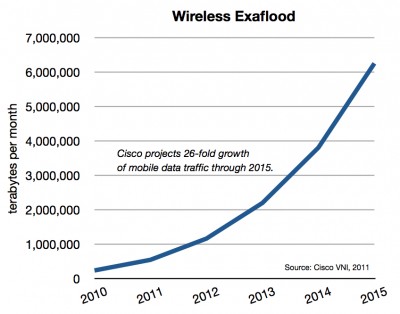In Monday’s Wall Street Journal, I address the once-again raging topic of “net neutrality” regulation of the Web. On September 21, new FCC chair Julius Genachowski proposed more formal neutrality regulations. Then on September 25, AT&T accused Google of violating the very neutrality rules the search company has sought for others. The gist of the complaint was that the new Google Voice service does not connect all phone calls the way other phone companies are required to do. Not an earthshaking matter in itself, but a good example of the perils of neutrality regulation.
As the Journal wrote in its own editorial on Saturday:
Our own view is that the rules requiring traditional phone companies to connect these calls should be scrapped for everyone rather than extended to Google. In today’s telecom marketplace, where the overwhelming majority of phone customers have multiple carriers to choose from, these regulations are obsolete. But Google has set itself up for this political blowback.
Last week FCC Chairman Julius Genachowski proposed new rules for regulating Internet operators and gave assurances that “this is not about government regulation of the Internet.” But this dispute highlights the regulatory creep that net neutrality mandates make inevitable. Content providers like Google want to dabble in the phone business, while the phone companies want to sell services and applications.
The coming convergence will make it increasingly difficult to distinguish among providers of broadband pipes, network services and applications. Once net neutrality is unleashed, it’s hard to see how anything connected with the Internet will be safe from regulation.
Several years ago, all sides agreed to broad principles that prohibit blocking Web sites or applications. But I have argued that more detailed and formal regulations governing such a dynamic arena of technology and changing business models would stifle innovation.
Broadband to the home, office, and to a growing array of diverse mobile devices has been a rare bright spot in this dismal economy. Since net neutrality regulation was first proposed in early 2004, consumer bandwidth per capita in the U.S. grew to 3 megabits per second from just 262 kilobits per second, and monthly U.S. Internet traffic increased to two billion gigabytes from 170 million gigabytes — both 10-fold leaps. New wired and wireless innovations and services are booming.
All without net neutrality regulation.
The proposed FCC regulations could go well beyond the existing (and uncontroversial) non-blocking principles. A new “Fifth Principle,” if codified, could prohibit “discrimination” not just among applications and services but even at the level of data packets traversing the Net. But traffic management of packets is used across the Web to ensure robust service and security.
As network traffic, content, and outlets proliferate and diversify, Washington wants to apply rigid, top-down rules. But the network requirements of email and high-definition video are very different. Real time video conferencing requires more network rigor than stored content like YouTube videos. Wireless traffic patterns are more unpredictable than residential networks because cellphone users are, well, mobile. And the next generation of video cloud computing — what I call the exacloud — will impose the most severe constraints yet on network capacity and packet delay.
Or if you think entertainment unimportant, consider the implications for cybersecurity. The very network technologies that ensure a rich video experience are used to kill dangerous “botnets” and combat cybercrime.
And what about low-income consumers? If network service providers can’t partner with content companies, offer value-added services, or charge high-end users more money for consuming more bandwidth, low-end consumers will be forced to pay higher prices. Net neutrality would thus frustrate the Administration’s goal of 100% broadband.
Health care, energy, jobs, debt, and economic growth are rightly earning most of the policy attention these days. But regulation of the Net would undermine the key global platform that underlay better performance on each of these crucial economic matters. Washington may be bailing out every industry that doesn’t work, but that’s no reason to add new constraints to one that manifestly does.
— Bret Swanson


